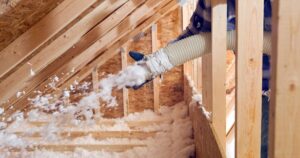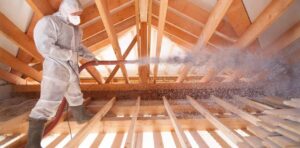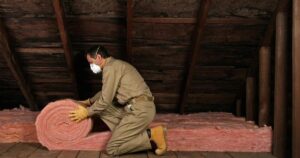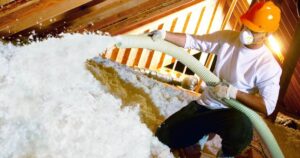A Cape Cod attic typically refers to the attic space in a Cape Cod-style house. Cape Cod houses are a traditional American architectural style characterized by their steeply pitched roofs, dormer windows, and symmetrical design. The attic in such a house may be used for storage or as an additional living space, depending on its size and design.
Insulating your Cape Cod attic is a cost-effective way to increase energy efficiency and improve the comfort of your home. Proper attic insulation can help regulate temperature and reduce heating and cooling costs. This step-by-step guide will walk you through the process of insulating your Cape Cod attic.
The attic in a Cape Cod home can also be an excellent place for storage, making it a versatile part of the house. With its quaint and traditional design, the Cape Cod attic can be a valuable asset to homeowners looking to maximize their living space or keep their belongings organized.
Assessment of Attic
Before you begin, assess the current state of your attic. Check for existing insulation, identify any air leaks, and evaluate the attic’s ventilation. Make any necessary repairs before starting the insulation project.
Choosing Insulation Material
Select the appropriate insulation material for your attic Insulation. Common options include fiberglass batts, blown-in cellulose, or spray foam insulation. Consider the R-value (thermal resistance) recommended for your climate and the specific needs of your attic.
Gathering Necessary Tools and Materials
Gather the tools and materials you’ll need for the job. This may include insulation material, vapor barriers, a utility knife, a staple gun, safety gear (goggles, gloves, mask), a measuring tape, and a ladder.
Preparation Before Insulation
Prepare the attic space by clearing out any stored items, debris, and obstructions. Ensure there’s a clear path to access all areas of the attic. Seal off any large gaps or holes in the ceiling to prevent insulation from falling through.
Installing Insulation
- Start at one end of the attic and work your way to the other, laying insulation between and over the ceiling joists or rafters.
- Install insulation with the paper or vapor barrier facing down, touching the ceiling below. Use a staple gun to secure it in place, making sure there are no gaps or compressed areas.
- Cut insulation to fit around obstacles like electrical wires and ventilation ducts. Use a utility knife for precision.
Sealing Air Leaks
Properly insulating is not enough if air leaks persist. Seal gaps, cracks, and openings to prevent air from escaping or entering the attic. Use caulk, weatherstripping, or foam to seal gaps around fixtures, chimneys, and vents.
Safety Measures
- Safety should be a top priority:
- Wear appropriate protective gear, including goggles, gloves, and a mask.
- Work in a well-ventilated space to minimize exposure to insulation materials.
- Avoid stepping on the ceiling below, as it may be weakened by insulation.
- Use a sturdy ladder and be cautious when moving around in the attic.
Post-Insulation Check
After insulating the attic, inspect your work. Ensure that the insulation is evenly distributed, without gaps or compressions. Verify that all necessary repairs and sealing have been completed.
FAQ’s
Do Cape Cods have attics?
Many Cape Cod homes have second-floor bedrooms with short walls (knee walls) that create large triangular attic spaces between the knee wall and the sloped ceiling.
Do people live on Cape Cod all year?
But for the 220,000+ population that lives year-round on Cape Cod, this slender peninsula means something else.
Final Considerations
- Consider consulting a professional if you’re unsure about the insulation process or need assistance with specific challenges.
- Keep records of the insulation materials used and any relevant warranties.
- Enjoy the improved energy efficiency and comfort of your Cape Cod attic.
By following these steps, you can effectively insulate your Cape Cod attic, enhancing your home’s energy efficiency and overall comfort.










